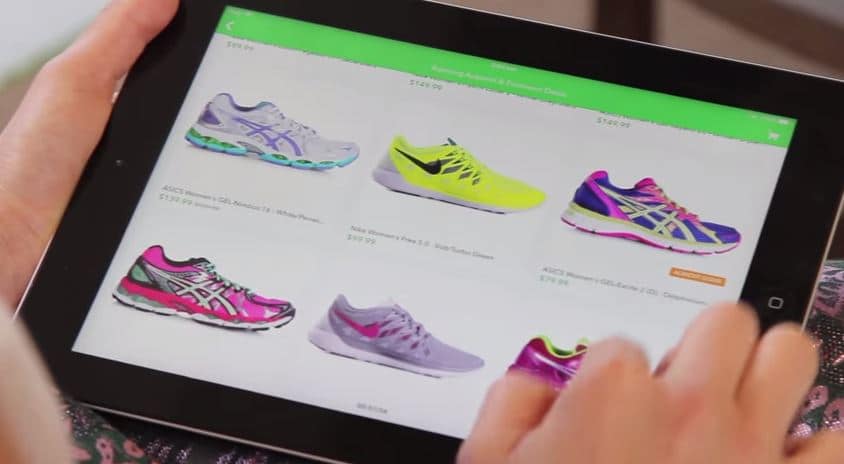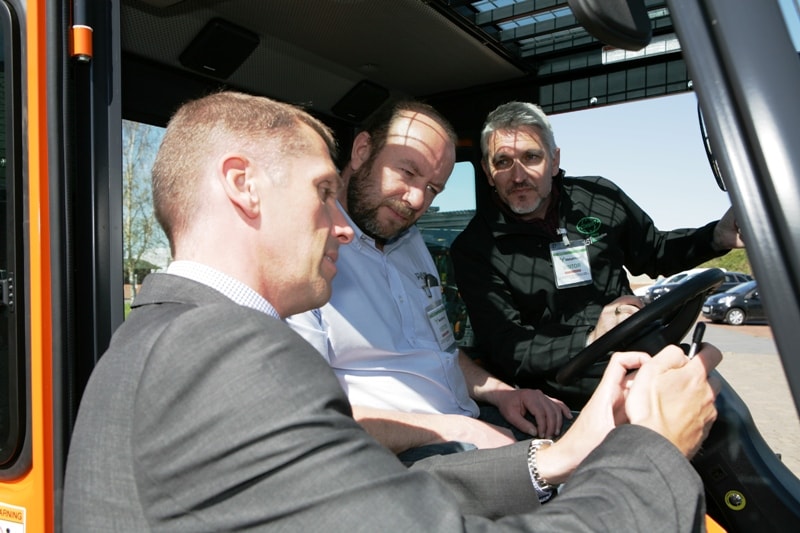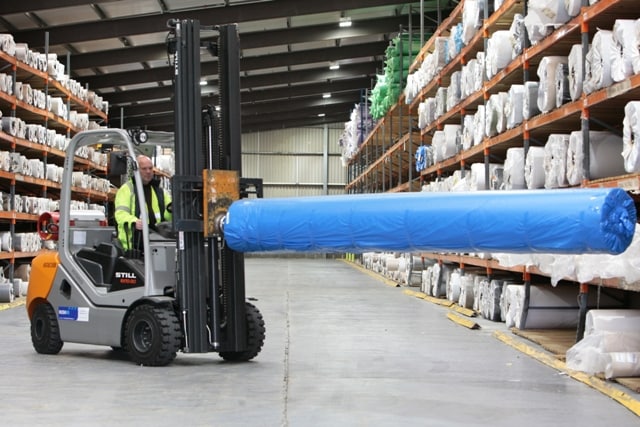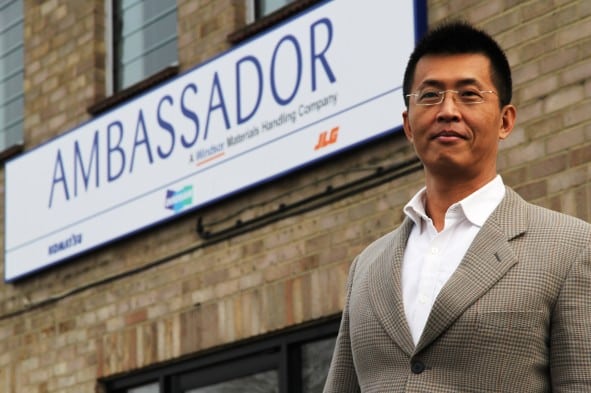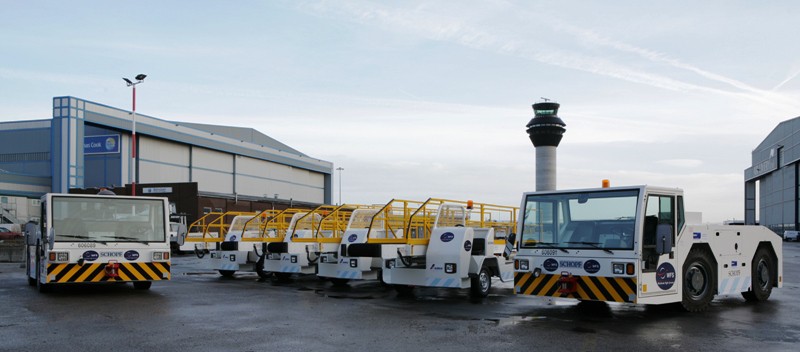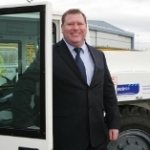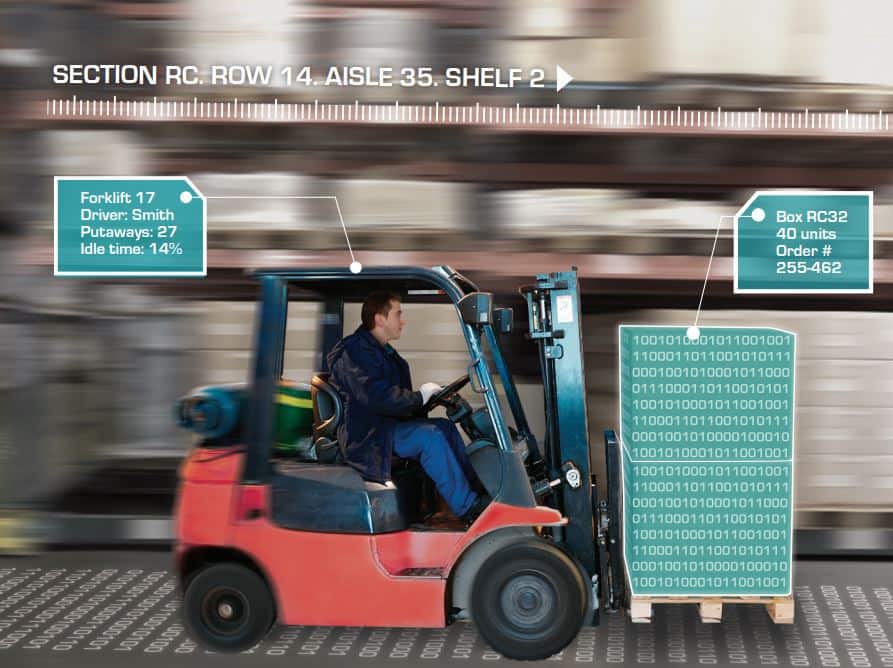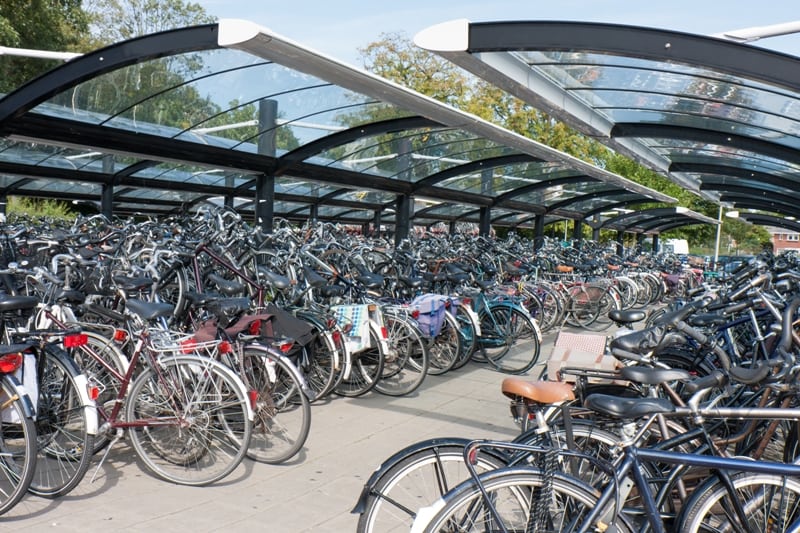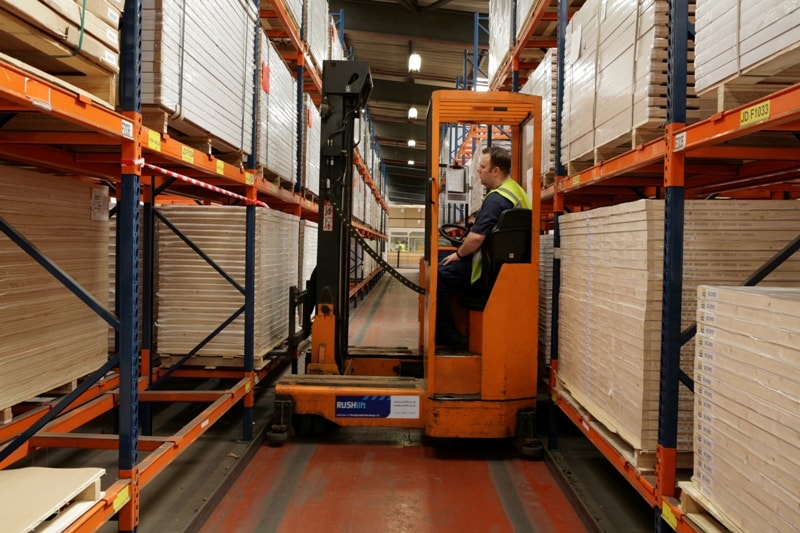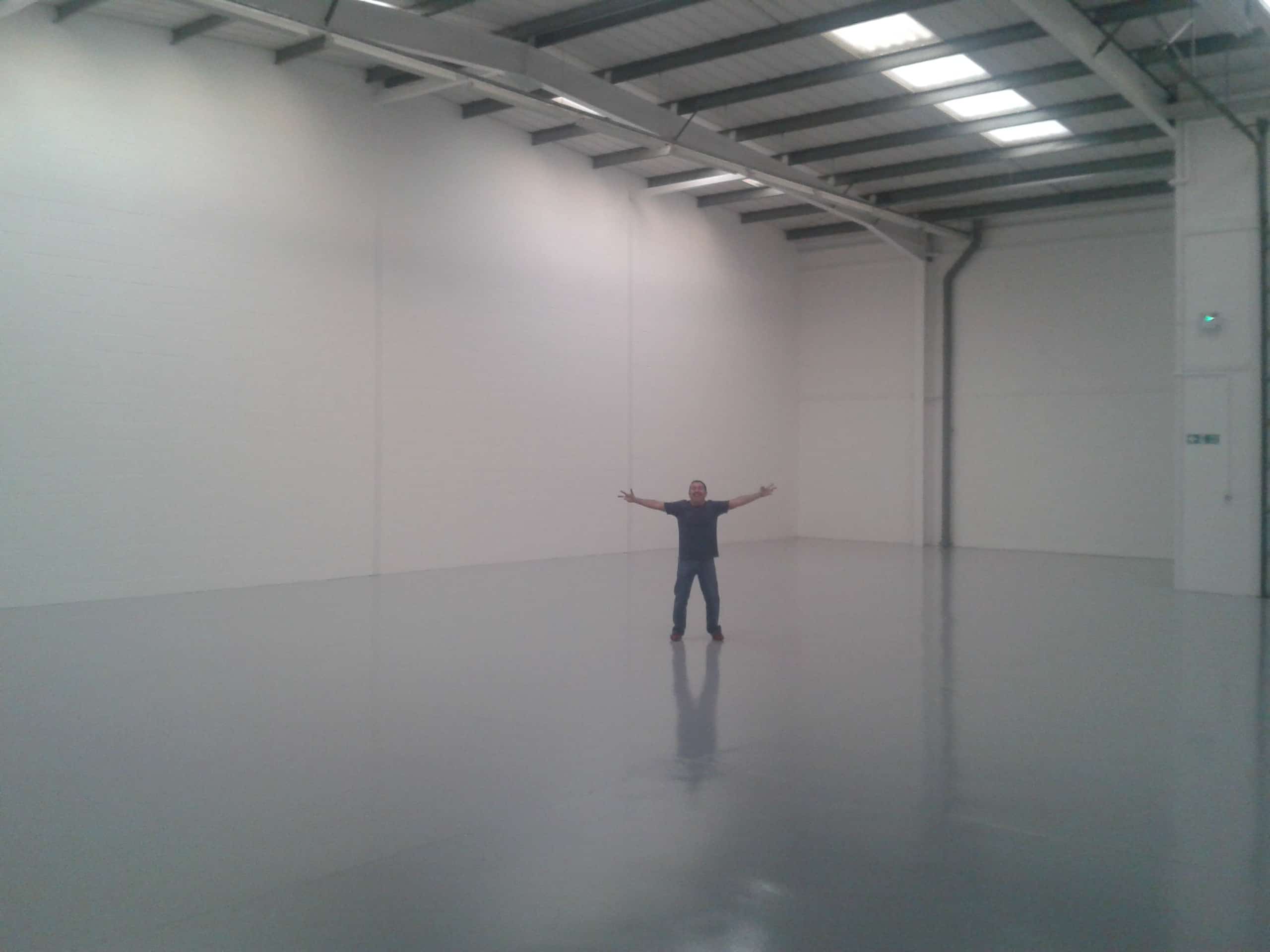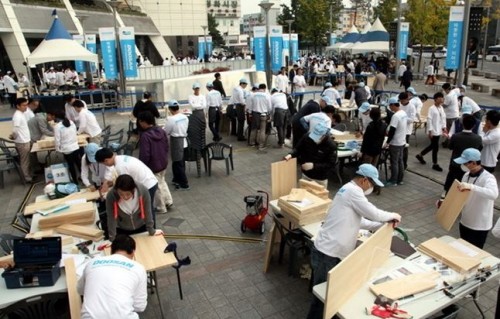Taiwanese forklift manufacturer, Tailift, is to launch three new ranges of forklifts through the newly appointed UK distributor, Ambassador.
Ambassador, a Windsor Materials Handling company, will act as the exclusive UK importer, distributing the equipment via its own dealer network. Parts, warranty, training and sales support to the newly-appointed dealers will be co-ordinated with Tailift, utilising Windsor’s established infrastructure.
The electric, diesel and LPG powered Z Series and Eco-Z Series ranges from 1.5 to 7.0 tonnes capacity and have been developed over the past two years as premium and economy equipment for export to Europe and the US. A third big truck range up to 10 tonnes, the 9L Plus, is expected later this year.
Tailift Sales & Marketing director, Louis Sun, believes the new agreement with Ambassador provides an opportunity for the brand to establish a firm foothold in the UK market. Said Louis:
“We are a major exporter with over 40 years’ experience and a trusted developer of forklift equipment across the world. Our product design, manufacturing processes and component supply agreements are extremely good, but we have struggled to find a partner that has the experience and knowhow to establish a strong presence in the UK.”
“For the partnership to be a success we rely on the local knowledge of the distributor and with Ambassador we already know that the communication and commitment to the Tailift brand looks very promising. It is part of the Tailift ethos to get to know our partners as well as possible. We are therefore very excited to develop a long-term business relationship and work together for our mutual success.”
Windsor managing director, Stephen Burton, said: “Tailift has a strong presence in the UK via their partner brands, but their own range is yet to make as strong an impact as it has elsewhere in the world. The build quality is excellent, yet it is extremely competitive. We see this new venture as a superb opportunity to deliver a high quality, value for money brand, via the strong infrastructure that Ambassador can deliver.”
Manufacturing in Taiwan and mainland China, Tailift’s Forklift Division has a production capacity of 28,000 units per annum. With Taiwan’s high-tech reputation, global status as a gateway to Asian markets, and 1,500 component suppliers based within a 37 mile radius, Tailift has often been the first port of call for other manufacturers looking to develop economic, high quality machines.
Already a global top-20 manufacturer, the company is known for its work for Flexi, Hubtex and Artison brands.
Last year Tailift sold a stake in its forklift operations to Toyota, and the two companies announced the business will be spun off into a jointly operated venture. A period of research is now underway as Toyota look to implement their TPS and Just In Time systems, and develop access to the Chinese market through Tailift’s 120-strong dealer network.
“As a business we believe we have much to offer our customers in terms of excellent local service and value for money products,” concludes Stephen Burton. “We see the Tailift product as the ideal machine for a cost-conscious operation that doesn’t want the hassle and uncertainty of a Chinese brand or the reliability issues of used equipment. For our dealers it offers an opportunity to gain access to a highly respected product range, backed up by strong support and a commitment to establishing and growing the brand into a major UK player.”
Acquired by Windsor in 2014, Ambassador played an important role in the expansion of Komatsu forklifts in the South of England. The business began in 1994, firstly as a Nissan dealer before being appointed as a Komatsu distributor in 2008.
With 11 local branches and over 110 service staff, Windsor provides a wide range of materials handling equipment, including diesel & gas forklifts, electric forklifts, warehouse equipment, side-loaders, large forklifts, container handlers, access equipment, cleaning equipment, articulating VNA, and tractor units.
Product Characteristics
Tailift prides itself on developing its own design concepts and long-term relationships with local and international suppliers. Whilst masts, engines and hoses may be sourced from Germany, Japan, the UK or elsewhere, other specialist items such as transmissions and electronic components are developed closer to home, taking advantage of the country’s reputation as an important IT centre and dynamic entrepreneurial economy.
As market leader in its home territory for over a decade, the Tailift brand has been firmly established as offering simple, easy to operate equipment, with an emphasis on performance and reliability.
The Z Series – High Performance & Value
With a low-noise floating powertrain, oil immersed disc brakes and high performance engines, the 1.8 to 7.0 tonnes diesel and LPG, Z Series is the high quality range aimed at heavy-duty applications where operators are looking for greater levels of refinement and productivity.
A reduced diameter steering wheel reduces fatigue levels whilst front, back and upwards visibility provides excellent operator awareness.
Increased safety levels are offered by an operator lock-out system which shuts off hydraulic function when an operator is not present; a low centre of gravity provides high residual capacity, even at height, and a hydraulic safety valve prevents the accidental dropping of loads at high speed.
Electric mini-levers, easy side access to the battery and large operator space also makes the 1.5 to 3.0 tonnes electric range of the Z Series attractive to indoor operations. The AC power system is complete with regenerative braking, anti-rollback and temperature control, adding to the sense of a remarkably advanced truck for a relatively low cost.
Tailift’s attention to detail is seen in some of the less obvious design features, such as a brake pedal arm that is 25% longer to facilitate a faster, increased braking force, reducing stopping distances by half. Other simple features, such as a longer grip handle, improves cabin access and co-ordinated front and rear drive motors reduce the turning circle.
The Eco-Z Series – An Economy Range Built to Surprise
The Eco-Z series was developed to complement the premium Z Series as a low-cost, yet reliable alternative.
Transmissions, braking and the capacity range may have been simplified, but a host of other features, including a heavy-duty chassis, high economy engines and excellent all round visibility remain.
The hidden tilt cylinders, adjustable steering, high comfort seat and multifunction control panel make the Eco-Z cabin a pleasant place to be. High mounted combination lights and sleek body design will please those looking to keep damage costs to a minimum, and Tailift’s own automatic transmission offers fast acceleration and quick, smooth directional response.
With Ambassador providing Tailift with specification advice for the UK market, and easy, clear and comfortable controls, the Eco-Z Series is likely to be attractive to those looking for a value product, with reliable, proven components, but are wary of other manufacturers where technical support is largely absent.

